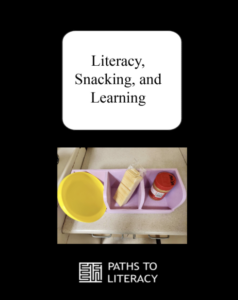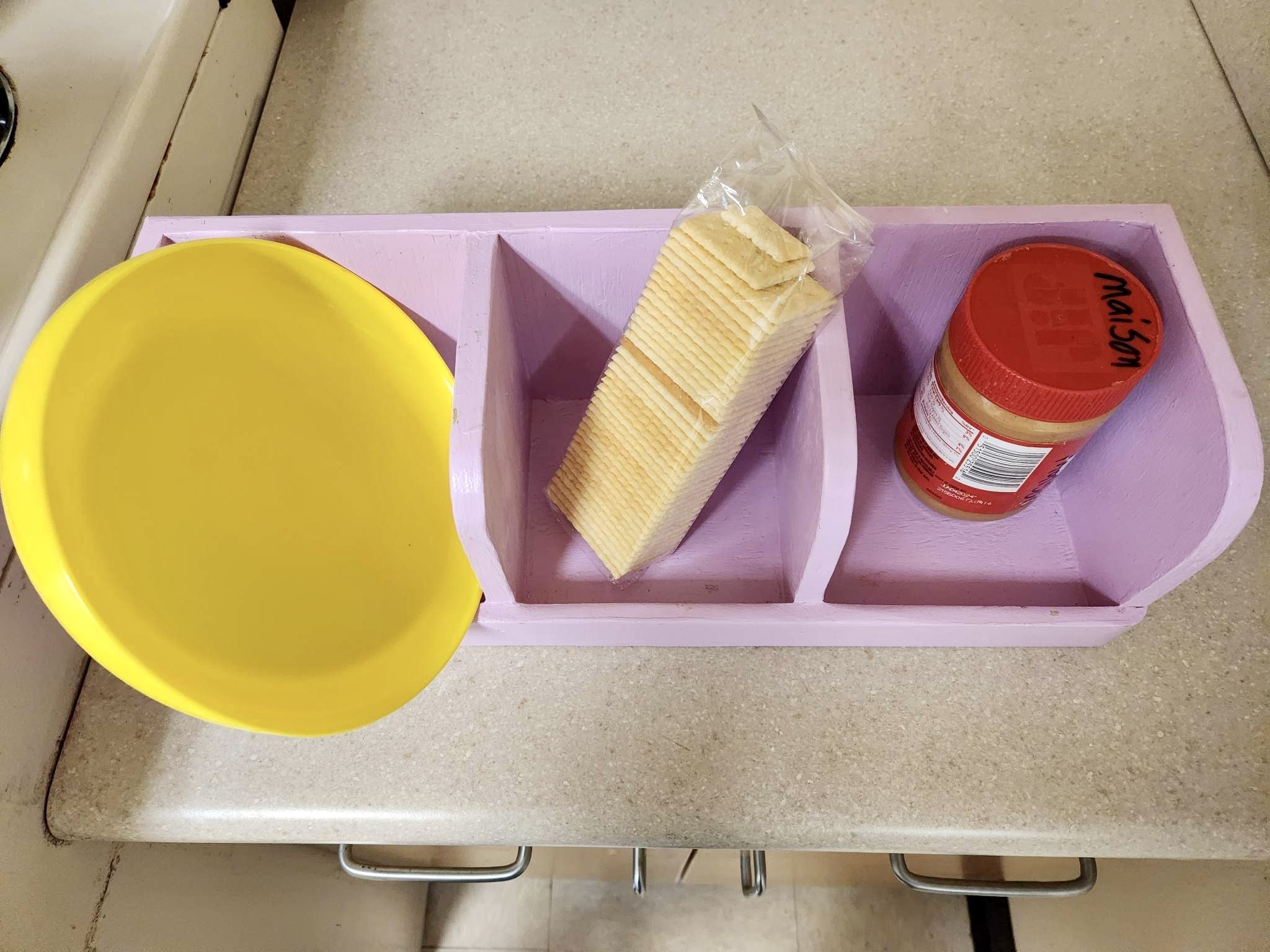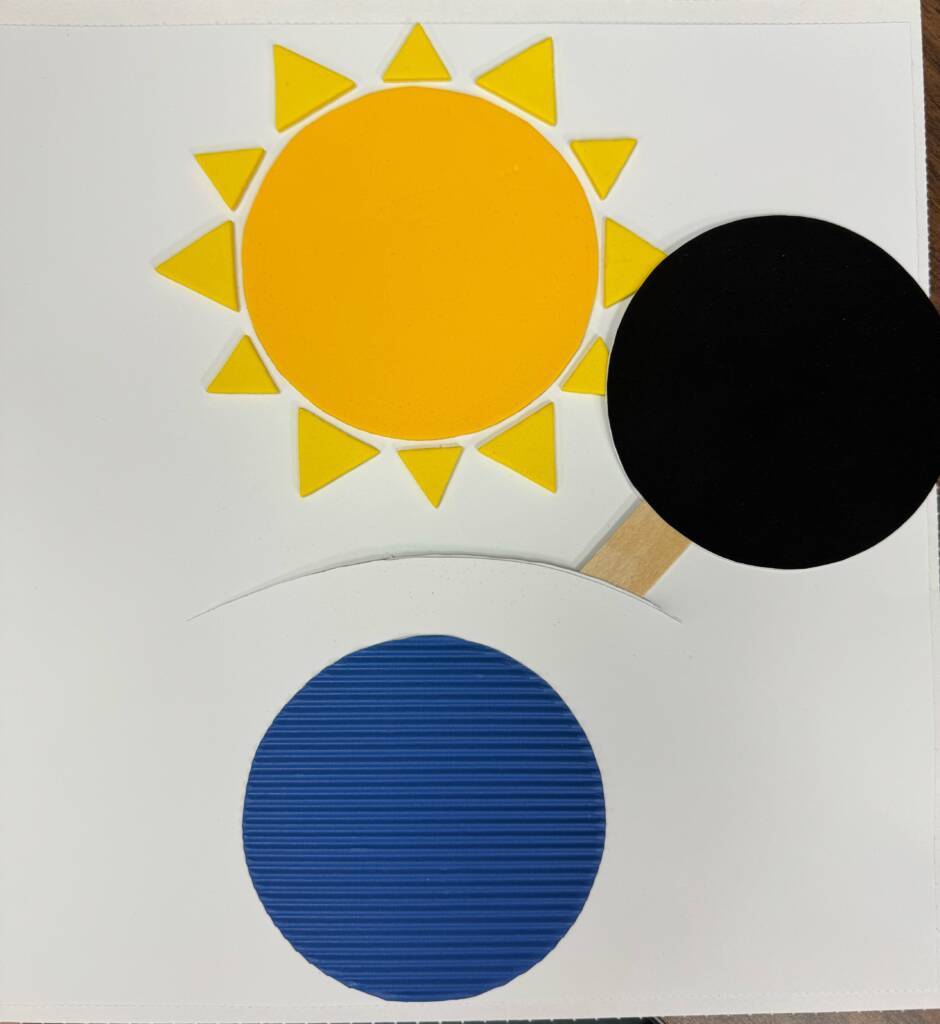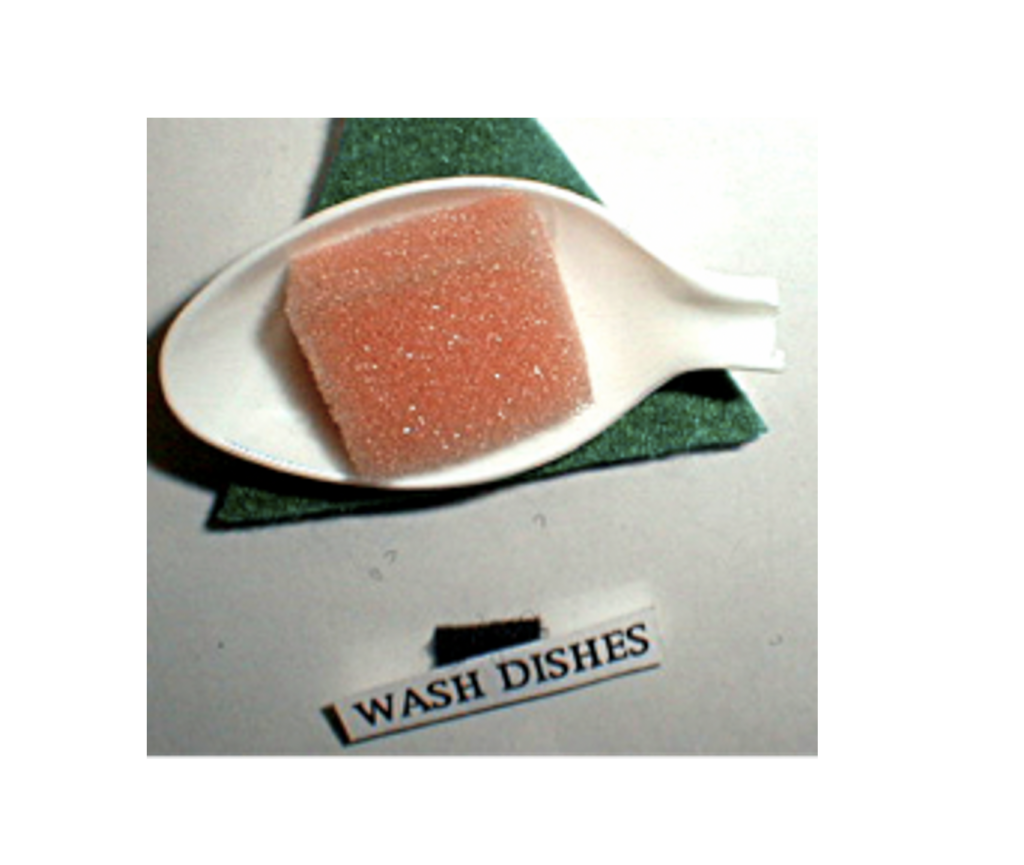Food is a highly motivating topic for many of us, and my deafblind student is no exception! In order to increase meaningful choice making and independent living skills opportunities throughout his day, the Speech and Language Pathologist (SLP) and I created routines that are centered around food. These routines also serve as a method for infusing early literacy skills like moving left to right, sequencing, and vocabulary development into functional routines which are meaningful and engaging to this student.
Originally, we began by creating one snack routine where he would make a simple sandwich. Our student uses a 4-slot sequence box during his hygiene routines, and with repeated practice, had demonstrated that he understood the concept of starting in the first slot and moving from left to right by independently working through his routine. We decided to incorporate a 3-slot sequence box into his snack routines to help generalize the pre-literacy skills of working from left to right, as well as to further facilitate anticipation and independence in another daily self-care routine. The goal was to start with a simple snack, and as he became familiar with the steps we planned to introduce opportunities for choice-making. For example, rather than peanut butter and jelly, perhaps the student would like peanut butter and honey.
The original routine is outlined below with two additional routines that were developed and integrated into his day once he demonstrated success with the original. Initially, the routine is taught by the same staff member, to ensure steps are followed consistently, materials are presented in the same way, and the same vocabulary is used. Routine sheets are created once the routine is finalized and consistent. These are printed and placed in a folder in the student’s calendar area to ensure that any new staff member or anyone unfamiliar with a routine is able to follow the same steps, use the same objects/tactile symbols, and model the same scripted language.
Peanut Butter Sandwich Routine
Initially, the 3-slot sequence box was presented preloaded. In the first slot, we placed the student’s adapted plate. In the second slot, we placed two pieces of bread, and then his loaf of bread, and the third slot held a jar of peanut butter and a knife.
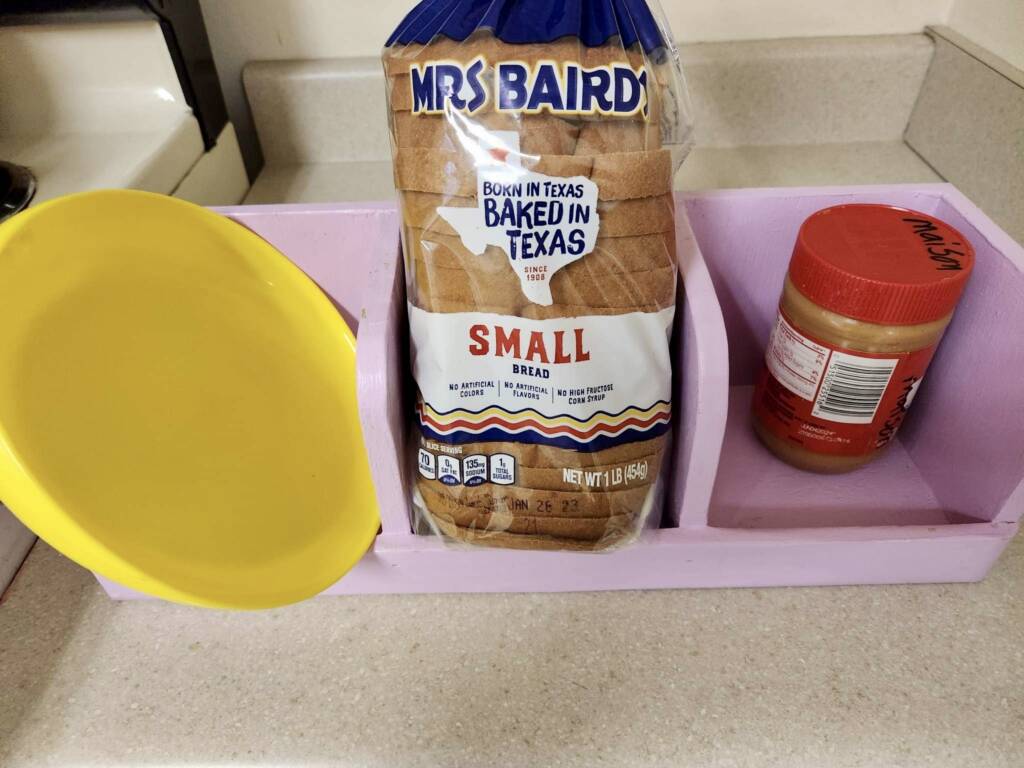
Because my student was familiar with the plate and the function of the sequence box, he was easily able to remove the plate and set it on the table to make his sandwich independently from the start. Originally, we began with two pieces of bread in the second slot, but as he became more familiar with the routine, we introduced teaching him how to open the bag of bread on his own to retrieve the two slices he needs.
During mealtimes, we are trying to teach our student not to over-stuff his mouth, so initially he would attempt to grab and stuff multiple slices of bread into his mouth immediately after removing them from the bag. We used hand-under-hand technique to model taking one piece of bread and placing it on the plate. We encouraged him to keep one hand on the bread while reaching for and retrieving the peanut butter for the next step of the routine. Since he understands how to take the top off of containers, he unscrews the lid and smells the jar. Once he does this, he will allow hand-under-hand assistance to scoop and spread the peanut butter. In order to support language development, we have begun to incorporate the sign for “clean up” after making and eating the sandwich. Once we show the sign, we support him in cleaning up the immediate table area by wiping it with a wet wipe and taking the plate to the sink.
Our student has mobility issues, so we collaborated with his Physical Therapist (PT) and COMS to create a modified push cart to allow the student to push his supplies to the sink while leaving one hand free for trailing. In order to provide additional practice for generalization of the skill, we use the push cart routine at the completion of breakfast and lunch, also.
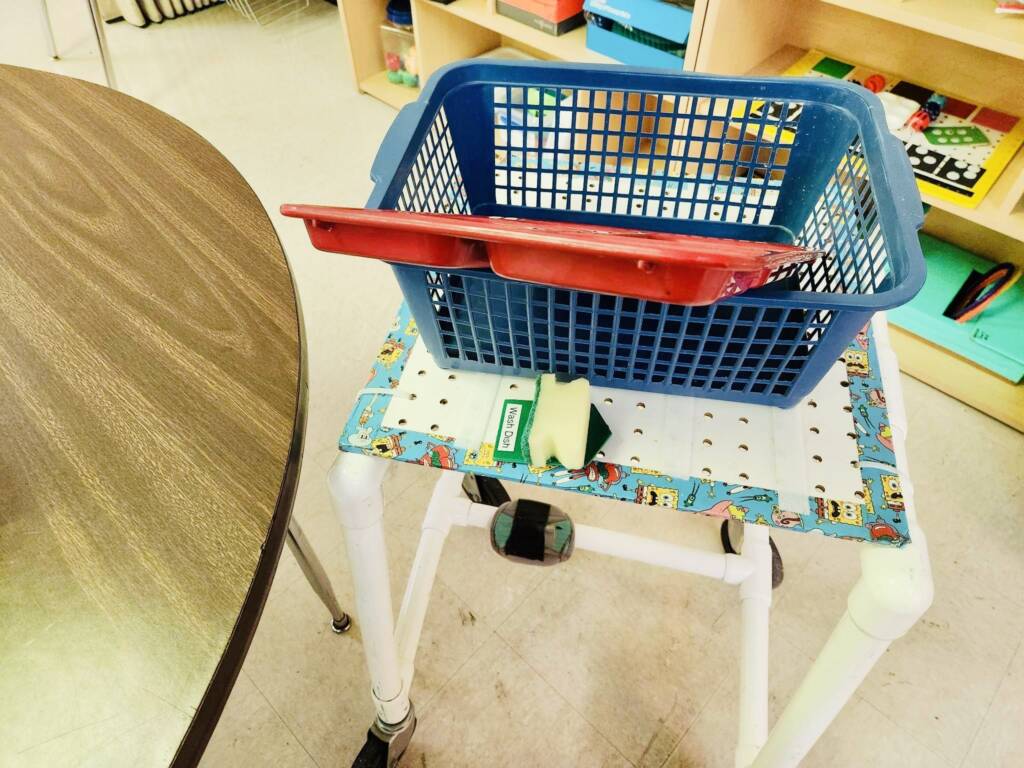
Expanding on this Routine
- As the student became more familiar with the routine, the items were then presented in an open basket, and with hand-under-hand support from staff, he was able to help load the sequence box and prepare to make his snack.
- Jelly and honey were also integrated into the routine as choices for this student. Initially, we placed the actual containers on a choice board and offered them to the student. In the future, we may add tactile symbols and/or signs to incorporate more language into the routine.
- We hope to build up to having our student retrieve the ingredients, load the sequence box, and put things away independently.
- We swapped ingredients to offer different snack routines as outlined below.
Peanut Butter Crackers
After demonstrating anticipation during the sandwich routine, we decided to offer crackers instead of bread. The snack routine is similar in that we used a 3-slot sequence box, his adapted plate, and the peanut butter. The only difference was that we replaced the loaf of bread with a sleeve of crackers.
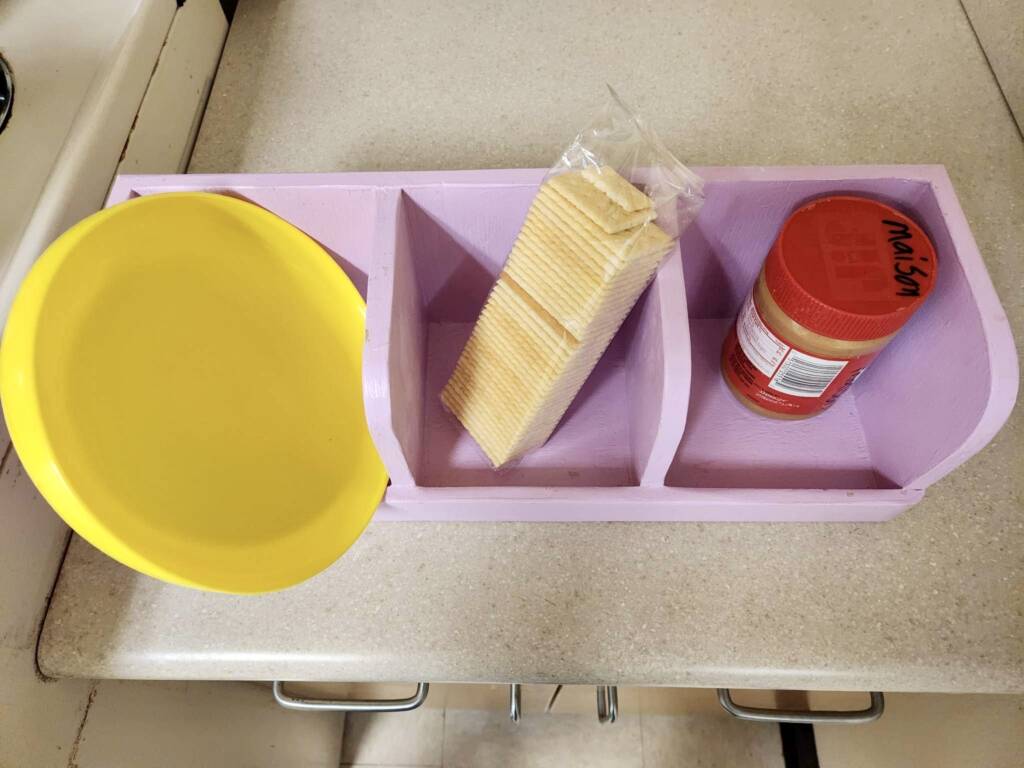
We began at the beginning, preloading the sequence box so we could introduce the crackers and teach him how to open the sleeve of crackers. Again, the student attempted to grab and stuff multiple crackers into his mouth, so we modeled taking several crackers, putting them on the plate, and keeping one hand on the crackers to show they were still there, while reaching for and retrieving the peanut butter. We also worked on teaching him to break the cracker in half, rather than stuffing the entire cracker into his mouth. Allowing him to hold on to half of the cracker seemed to reduce stuffing behaviors, and eventually we noticed the student began to take bites rather than putting the whole thing into his mouth.
Goldfish Crackers
Another motivating snack for my student is Goldfish. He typically experienced them in the pre-packaged, single serving bags, but we decided to offer the snack in an alternate way to teach new skills. Using his 3-slot sequence box with his adapted plate in the first slot, a 1 cup measuring cup in the second slot, and a large box of Goldfish with the pourable spout, in the third slot, we were ready to go!
This routine has required more hand-under-hand support. The student knows how to open the top of the Goldfish box because he has experience with milk and juice cartons, but he is learning to pour the Goldfish into the cup. He is then encouraged to pour the cup of Goldfish onto his plate. The team feels as though using this activity is a way to work on multiple skills at one time. Since he’s only allowed one measuring cup full at a time, he is learning to understand portions. It is also teaching him to only take several crackers at a time from the pile on his plate, rather than trying to eat all of the crackers at once. The student is learning how to pour and dump the contents of the measuring cup.
Connections to Literacy
Sequencing, symbolic communication, moving left to right, and building vocabulary are the current areas of literacy development we have integrated into these snack routines. Moving forward, we hope to build upon these skills by expanding our routines. As the student becomes more familiar with the tactile symbols we have chosen to represent the objects and preferred food items from each routine, we hope to be able to introduce simple recipes or directions into the activity. These could be compiled into a book for the student to take home and use with his family.
